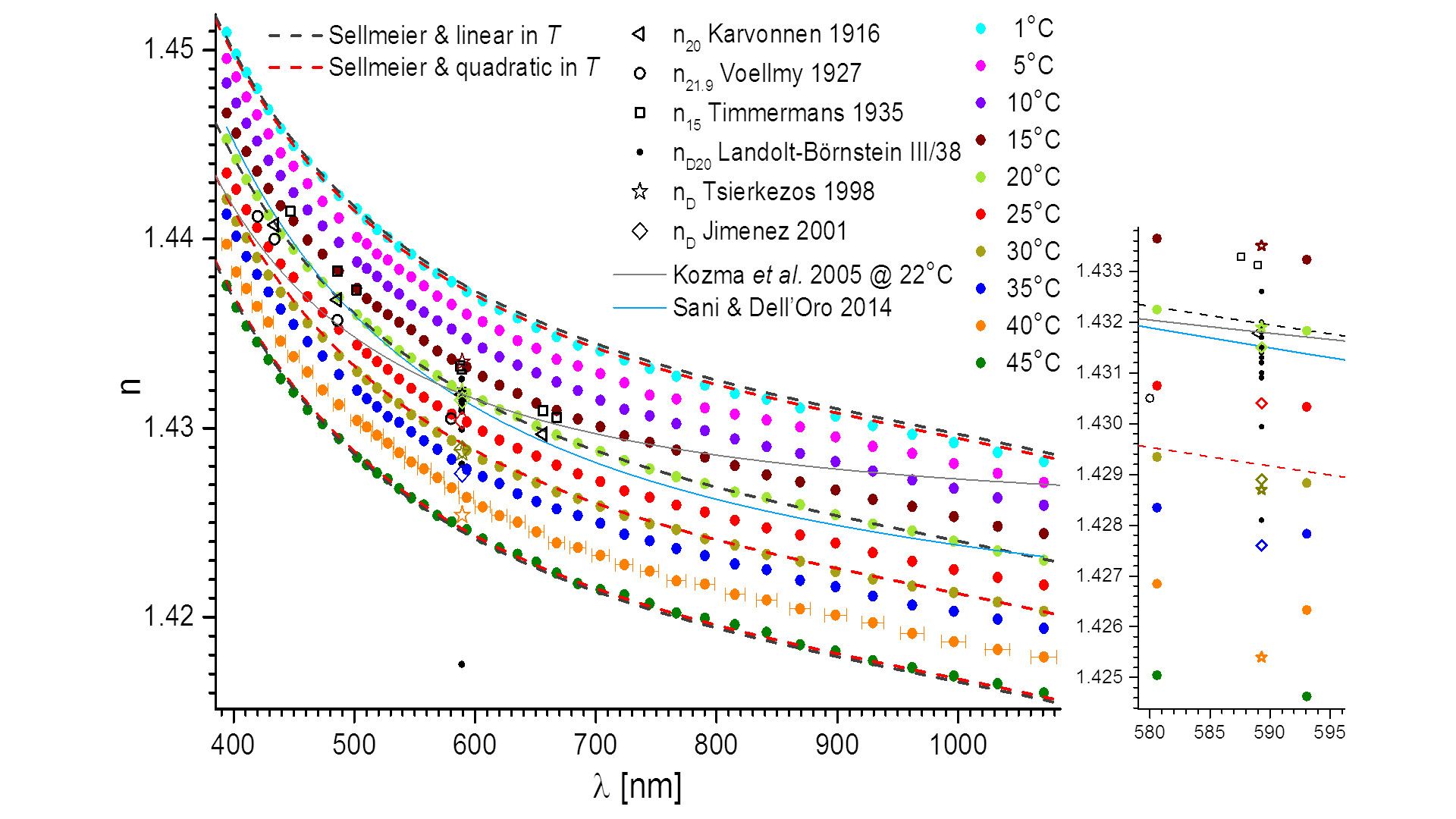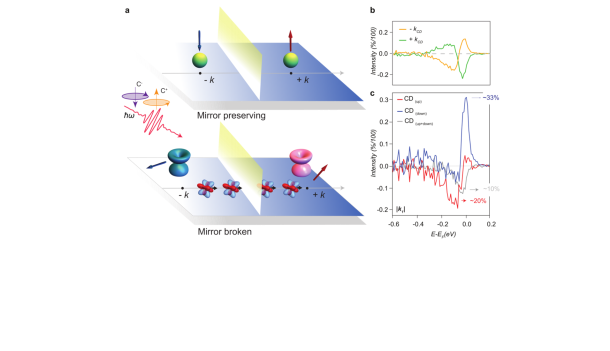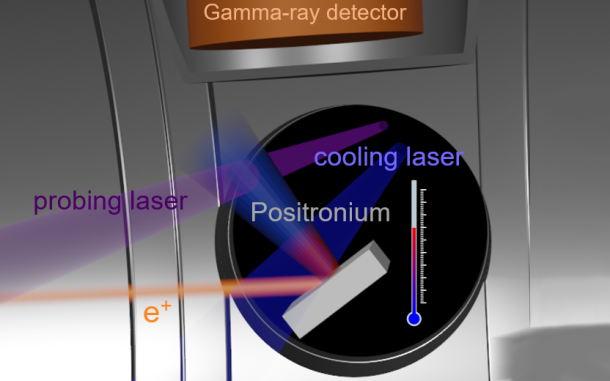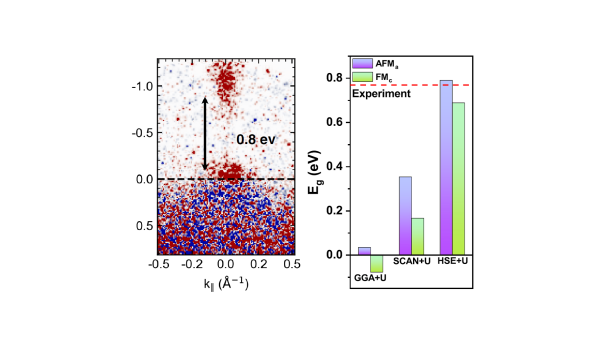
- Homepage
- Science
- Research highlights
- Research highlights
- Temperature dependence of chromatic dispersion for hygroscopic liquids

Using a modified Abbe refractometer, the chromatic dispersion and temperature dependence of the refractive index of a range of hygroscopic liquids was measured from 390 to 1070 nm for temperatures from 1 to 45°C. To obtain an analytical formula, the Sellmeier formula was fitted to the experimental results for each temperature and combined with the temperature dependence.
Achieving ultimate accuracy in measurements using optical methods requires accurate values of the refractive indices of the materials being characterised for a given wavelength and temperature to be known. An example of such measurements is the remote characterisation of (micro)particles - which we are concerned with, but also the diagnostics of industrial gas dehydration processes involving glycols (primarily triethylene glycol). The amount of absorbed water can be accurately assessed by measuring the refractive index of the mixture, which in turn requires accurate refractive indices for pure liquids. Most systematic measurements of the refractive index as a function of (either) wavelength or temperature are about a century old, and simultaneous wavelength- and temperature-dependent measurements are rare. For our optical research, we decided to build a dedicated system to measure the refractive indices of liquids as a function of both wavelength and temperature. However, since we studied common hygroscopic liquids, the results seem worth disseminating.
Using a modified Abbe refractometer, we measured the chromatic dispersion and temperature dependence of refractive index for six hygroscopic liquids: ethylene glycol, diethylene glycol, triethylene glycol, tetraethylene glycol, propylene glycol (propane-1,2-diol) and glycerol from 390 to 1070 nm for temperatures from 1 to 45°C. We were very careful to avoid contamination of the test liquids with water and particles. We analysed the measurement uncertainties. We noted that (in the given range and within the available measurement accuracy) the dependence of refractive indices on wavelength and temperature can be considered independently. For each wavelength used, we determined the temperature dependence of refractive index. These showed a weak wavelength dependence. In order to obtain an analytical formula, we fitted the Sellmeier formula to the experimental results for each temperature and combined it with the temperature dependence (taking into account its wavelength dependence).



